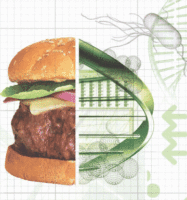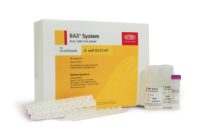AOAC Certifies DuPont's BAX System to Detect Pathogenic E. coli
The DuPont BAX® System has been certified by the AOAC Research Institute as a Performance Tested Method (PTM) for detecting Shiga toxin-producing E.coli (STEC) in beef trim and ground beef.
“With this certification, our entire portfolio of BAX System assays for three important foodborne pathogens — E coli, Salmonella and Listeria monocytogenes — has been validated by AOAC, “ said Doris Engesser-Sudlow, global director for molecular diagnostics, DuPont Nutrition & Health. “This means that food companies can use one molecular-based platform for those pathogen testing needs, with confidence in accurate results that are certified as reliable and reproducible.”
The AOAC Research Institute, a subsidiary of AOAC International in Gaithersburg, MD, validated the BAX System method as equivalent to the reference culture method for detecting STEC, but with much faster time to results. BAX System assays for detecting E. coli O157:H7, Listeria spp, and many other pathogens are already PTM-certified. Beyond that, AOAC International has awarded Official Method of Analysis (OMA) status to the BAX® System for detecting for Salmonella and Listeria monocytogenes.
The BAX System suite of STEC assays, based on real-time polymerase chain reaction (PCR) technology, was developed in collaboration with the Agricultural Research Services of the United States Department of Agriculture (USDA ARS) and was recently included, along with the BAX System real-time PCR assay for E. coli O157:H7, in the Microbiology Laboratory Guidebook of the Food Safety & Inspection Service (USDA FSIS).
Food processing companies around the world use on the BAX® System to detect pathogens or other organisms in raw ingredients, finished products and environmental samples. The automated system uses PCR assays, tableted reagents and optimized media to detect Salmonella, Listeria species, Listeria monocytogenes, E. coli O157:H7 and STEC, Campylobacter, Staphylococcus aureus, Vibrio, and yeast and mold. Many of these tests have been certified by AOAC and AFNOR and/or approved by government agencies in the Americas, Asia and Europe.
Looking for a reprint of this article?
From high-res PDFs to custom plaques, order your copy today!




